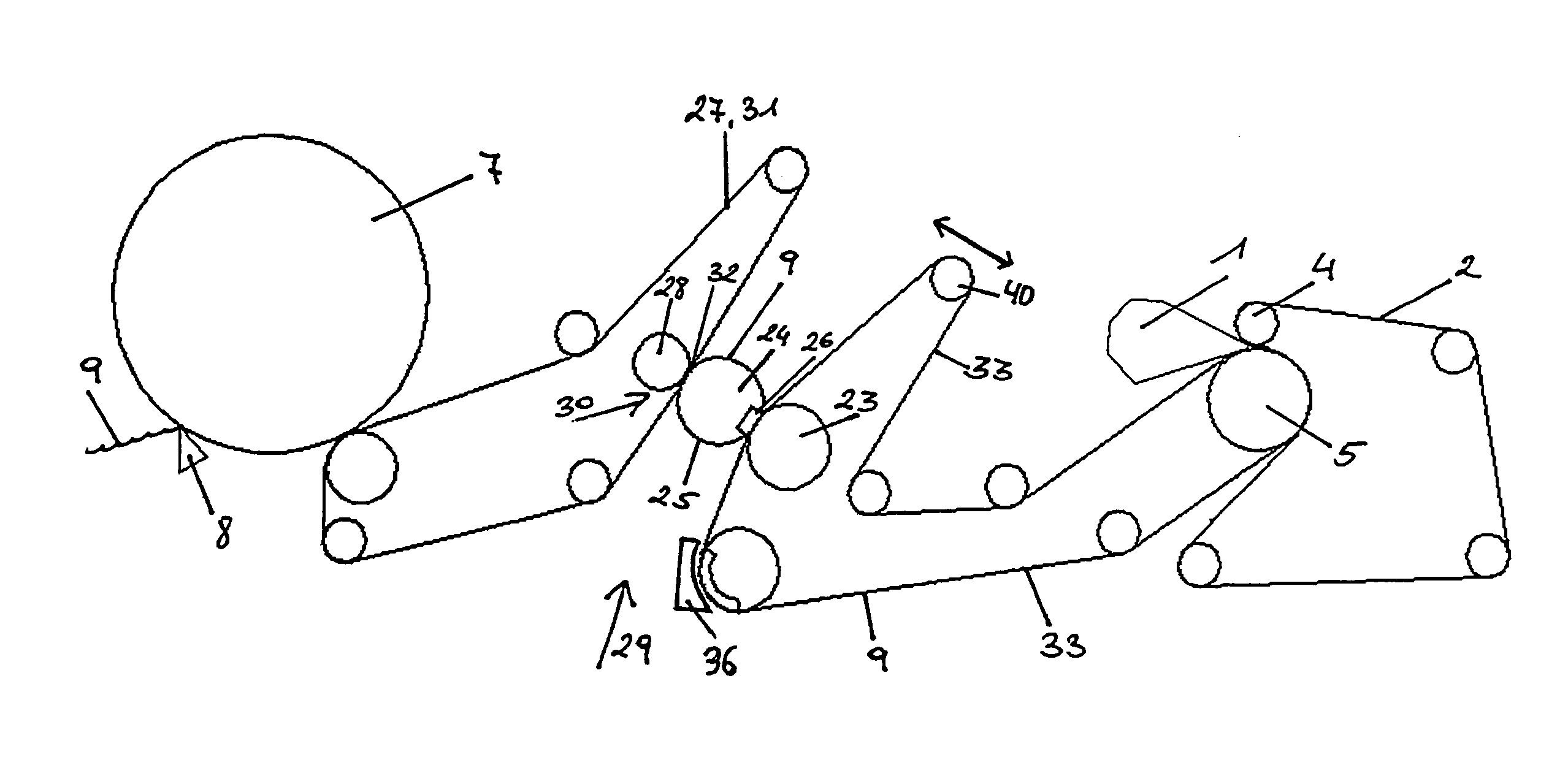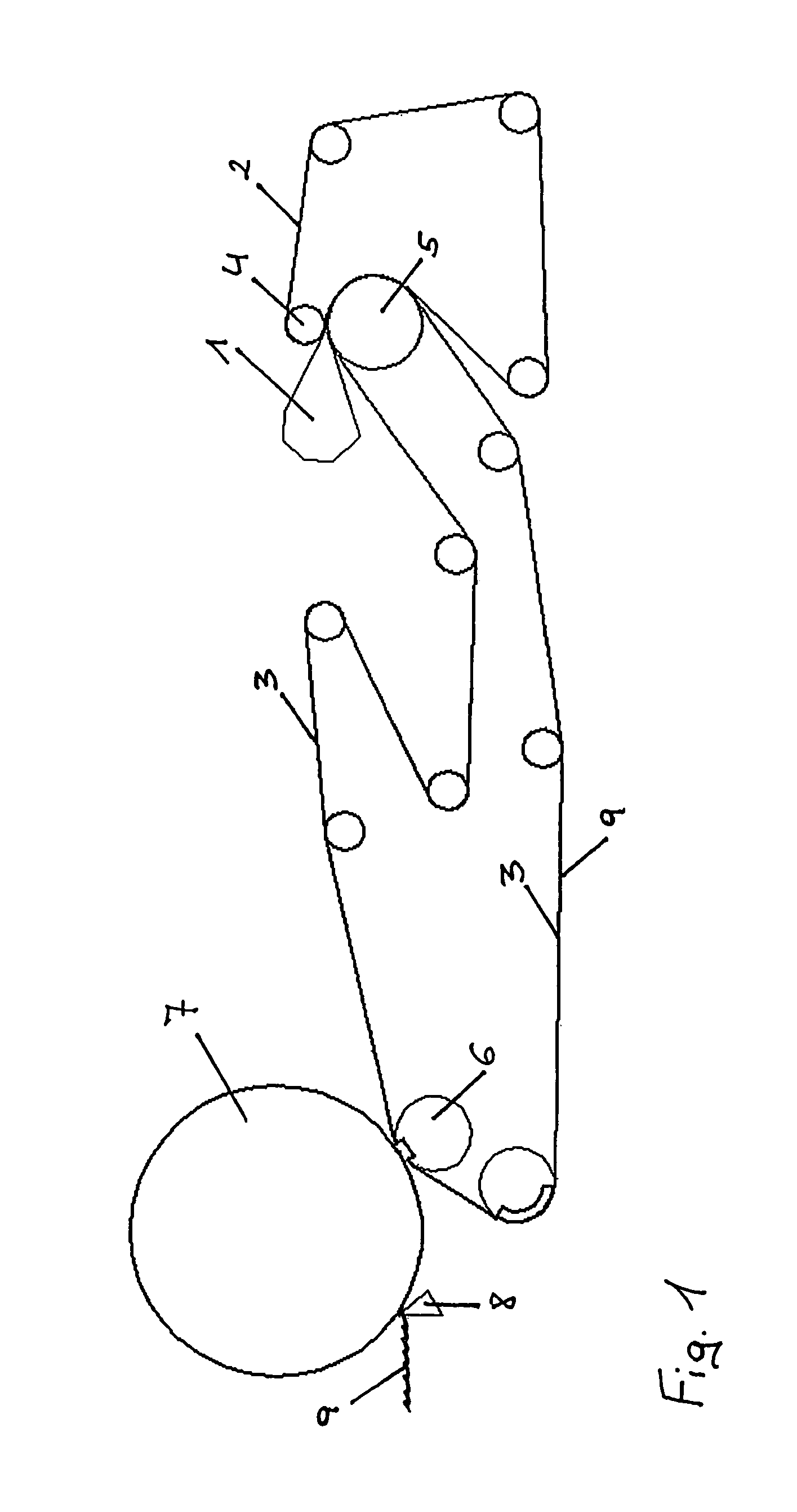Device for treating a pulp web in an extended nip pressing unit
a technology of pulp web and press nip, which is applied in the direction of press section, non-fibrous pulp addition, manufacturing tools, etc., can solve the problems of limited mechanical pressing and line load, and achieve the effect of good web transfer, good web transfer, and improved pulp web dewatering in the press nip
- Summary
- Abstract
- Description
- Claims
- Application Information
AI Technical Summary
Benefits of technology
Problems solved by technology
Method used
Image
Examples
Embodiment Construction
[0032]In the following description, identical reference numerals in the individual figures refer to identical components.
[0033]FIG. 1 shows a conventional tissue machine with shoe press technology. The pulp suspension is fed to the forming unit through a headbox 1 and exits from the headbox 1 between a breast roll 4 and a forming roll 5. An outer fabric 2 is wrapped round the breast roll 4. In the forming unit, the pulp suspension is dewatered far enough for a pulp web 9 to form on the fabric 3. The fabric 3 is preferably a felt that carries the pulp web 9 to a shoe press roll 6. An extended press nip in which the pulp web is dewatered mechanically and transferred to the Yankee cylinder 7 is formed between the shoe press roll 6 and the Yankee cylinder 7. Thermal drying of the pulp web 9 takes place on the Yankee 7. A doctor 8 detaches the dry pulp web 9 from the Yankee cylinder 7. Due to direct pressing of the pulp web 9 onto the Yankee cylinder 7, mechanical dewatering is limited b...
PUM
| Property | Measurement | Unit |
|---|---|---|
| exit angle | aaaaa | aaaaa |
| groove width | aaaaa | aaaaa |
| groove width | aaaaa | aaaaa |
Abstract
Description
Claims
Application Information
 Login to View More
Login to View More - R&D Engineer
- R&D Manager
- IP Professional
- Industry Leading Data Capabilities
- Powerful AI technology
- Patent DNA Extraction
Browse by: Latest US Patents, China's latest patents, Technical Efficacy Thesaurus, Application Domain, Technology Topic, Popular Technical Reports.
© 2024 PatSnap. All rights reserved.Legal|Privacy policy|Modern Slavery Act Transparency Statement|Sitemap|About US| Contact US: help@patsnap.com










